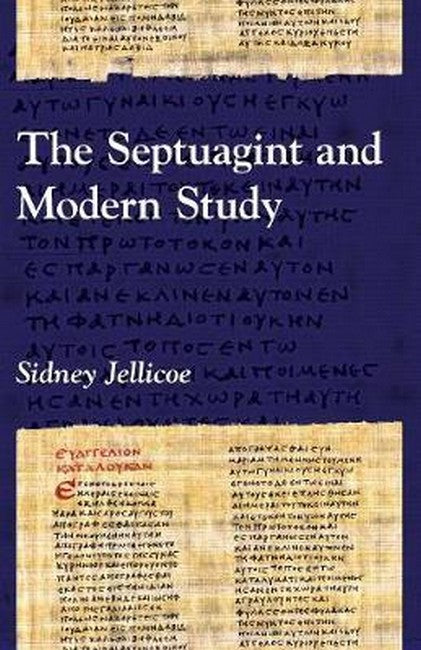ABBREVIATIONS
I. INTRODUCTION. MODERN STUDY—ITS ANTECEDENTS, BEGINNINGS, AND DEVELOPMENT
Antecedents
The Edition of Holmes and Parsons
Tischendorf’s Editions
The Modern Era
Beginnings in Germany and Britain
Paul Anton de Lagarde; Field, Swete, Hatch and Redpath
Developments
The Gottingen Septuagint: Rahlfs and his Collaborators
The Successors of Rahlfs
The Larger Cambridge Septuagint
The Cambridge and Gottingen Editions compared
PART ONE
ORIGINS AND TRANSMISSION-HISTORY
II. SEPTUAGINT ORIGINS: THE LETTER OF ARISTEAS
Literary genre
Editions
Translations
Contents
Transmission-History
Date and Purpose
Historical Value
III. MODERN THEORIES OF ORIGIN
The Septuagint a Greek Targum (Paul Kahle)
A Palestinian Provenance (Moses Gaster)
The Liturgical Approach (H. St. John Thackeray)
The Transcription Theory (O.G. Tychsen, F.X. Wutz)
IV. EARLY REVISIONS
The Background
Aquila
Theodotion
Symmachus
V. ORIGEN AND THE HEXAPLA
The Compiler: his Objectives and Competence
The Purpose of the Second Column
Origen’s Reconstituted Text: its achievements and limitations
The Problem of the Tetrapla
Quinta, Sexta, and Septima
The Syro-Hexaplar
Hexaplaric Remains, Editions
VI. THE TRIFARIA VARIETAS
The Palestinian Recension of Origen
The Hesychian Recension
Lucian and his Recension
PART TWO
TEXT AND LANGUAGE
VII. MANUSCRIPTS OF THE SEPTUAGINT
Uncials
Cursives
Papyri (including Fragments)
VIII. THE VERSIONS
Introductory
1. The Samaritan Pentateuch
2. The Syriac Version
3. The Old Latin
4. The Vulgate
5. The Coptic Versions
6. The Gothic Version
7. The Armenian Version
8. The Georgian Version
9. The Slavonic Version
10. The Ethiopic Version
11. The Arabic Versions
IX. THE BOOKS OF THE SEPTUAGINT. MODERN EDITIONS AND TEXT-CRITICAL STUDIES
A. Books edited in the Larger Cambridge Edition
1. The Pentateuch
2. The Historical Books
B. Books Edited in the Gottingen Edition
1. Psalms and Odes
2. The Prophets
3. The Books of Maccabees
4. Wisdom Literature
X. LANGUAGE AND STYLE
Translation-technique
The Hebrew Text and the Septuagint
The LXX as emendational instrument
‘Haggadi’ alterations
Rubrical directions
‘Arabisms’ and other cognate Semitic roots
Deficiencies of LXX vis-a-vis M.T.
Grammar and Lexicography
XI. THE CURRENT SITUATION IN SEPTUAGINT STUDIES
Progress in the Current Century
Current Problems and Future Prospects
1. Vorlage
2. The Recensions
3. Patristica, Rabbinica, and the Septuagint
4. The Early Printed Editions
5. The Autonomy of the Septuagint
6. The New Testament and the Septuagint
Some Final Considerations
APPENDIX I. Sigla employed in the Larger Cambridge Edition
APPENDIX II. Manuscripts collated in the Gottingen and Larger Cambridge Editions: Cursives, Papyri, Fragments
BIBLIOGRAPHY
INDEXES

